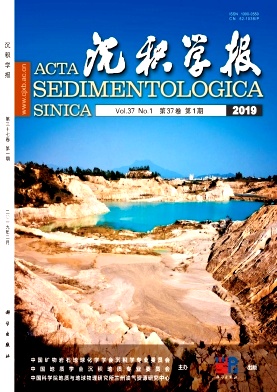Facies Analysis and Paleoclimate Implications of the Late Cretaceous Danxia Formation in the Danxia Basin, Northern Guangdong Province, South China
doi: 10.14027/j.issn.1000-0550.2018.118
- Received Date: 2018-02-08
- Rev Recd Date: 2018-03-19
- Publish Date: 2019-02-10
-
Key words:
- Danxiashan /
- depositional facies /
- paleoclimate /
- alluvial fan /
- aeolian sandstone-paleosol /
Abstract: The Danxiashan of northern Guangdong province is representative of the World Natural Heritage site of "China Danxia". Previous studies were predominantly focused on description of landforms in the Danxiashan UNESCO Global Geopark. Little is known about depositional environments and paleoclimate during the formation of the Late Cretaceous redbeds, which are the bedrock of the Danxia landscapes. The Danxia Formation is further subdivided into three members. The first (Bazhai) and the second (Jinshiyan) members are outcropped at the measured Bazhai Section. The former is dominated by conglomerates with graded and parallel beddings and imbricated structures, whereas the latter is characterized by large-scale cross-bedded aeolian sandstones with paleosol interbeds. The third (Baizhaiding) member consists largely of conglomerate beds and was observed at other outcrops in the basin. Detailed stratigraphic column measurement, pebble counting, and petrographic and grain size analysis were performed to understand lithofacies changes in the Bazhai Section. The results show that seven lithofacies were recognized in the Danxia Formation: normal graded conglomerate, inverse graded conglomerate, parallel bedding conglomerate, structureless conglomerate, large-scale cross-bedded aeolian sandstone, medium- to thin-bedded sandstone, and paleosol. The pebbles of the Bazhai Member range from 0.5 cm to 9.5 cm in diameter and are mainly composed of quartzite, quartz sandstone, and brick-red sandstone. The grains of the sandstone samples from the Jinshiyan Member are 0.03-0.5 mm in diameter, well sorted, and dominantly consist of a saltation population, indicating aeolian environments. Therefore, lithofacies differences from the Bazhai to the Jinshiyan Members of the Danxia Formation are possibly indicative of a change from a stream-dominated alluvial fan system with higher deposition rate to an aeolian system, which in turn is considered as recording a paleoclimatic transformation from semi-humid to very arid conditions. The red aeolian sandstone-paleosol succession of the Jinshiyan Member might be linked with broad aridity in the middle latitudes of East Asia during the Campanian Stage. The Baizhaiding Member, the uppermost part of the Danxia Formation, is again characterized by conglomerate beds, which probably suggests a paleoclimate change towards semi-humid conditions. The abundant coarse clasts were transported to the basin by streams because of increased precipitation, reflecting new alluvial fans overlying on the aeolian sandstones and paleosols of the Jinshiyan Member.
| Citation: | CHEN LiuQin, LI PengCheng, GUO FuSheng, LIU Xin, LI XinMin. Facies Analysis and Paleoclimate Implications of the Late Cretaceous Danxia Formation in the Danxia Basin, Northern Guangdong Province, South China[J]. Acta Sedimentologica Sinica, 2019, 37(1): 17-29. doi: 10.14027/j.issn.1000-0550.2018.118 |






 DownLoad:
DownLoad: